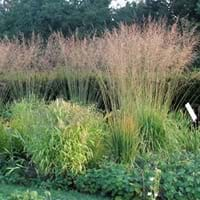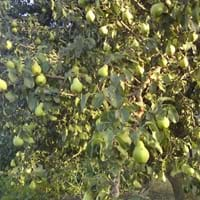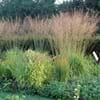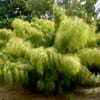Life Span
Perennial
Perennial
Origin
Europe, Eastern Europe, Southern Europe, Russia/Siberia, Asia, Central Asia, Southern Asia
Hybrid origin
Types
Not Available
Not Available
Habitat
Boggy areas, Dry and Young forest Heaths, Lowland
Hedge, hedge rows, Woodland edges
USDA Hardiness Zone
5-8
4-9
Sunset Zone
1a, 1b, 2a, 2b, 3a, 3b, 4, 5, 6, 7, 8, 9, 14, 15, 16, 17
Not Available
Habit
Arching/Fountain-shaped
Upright/Erect
Flower Color
Dark Purple
White
Flower Color Modifier
Bicolor
Not Available
Fruit Color
Non Fruiting Plant
Light Red, Orange, Yellow
Leaf Color in Spring
Green
Green
Leaf Color in Summer
Light Green
Green
Leaf Color in Fall
Green, Gold
Green
Leaf Color in Winter
Tan
Light Green
Leaf Shape
Needle like
Elliptic
Plant Season
Spring, Summer, Fall, Winter
Spring, Summer
Sunlight
Partial Sun, Partial shade
Full Sun, Partial Sun
Type of Soil
Clay, Loam, Sand
Loam, Sand
The pH of Soil
Acidic, Neutral
Acidic, Neutral
Soil Drainage
Average
Well drained
Bloom Time
Early Summer, Summer, Late Summer, Early Fall
Spring
Repeat Bloomer
No
Not Available
Tolerances
Not Available
Drought
Where to Plant?
Ground, Pot
Ground
How to Plant?
Divison, Transplanting, Vegetative Reproduction
Seedlings
Plant Maintenance
Low
Medium
Watering Requirements
Requires regular watering, Water more frequently during periods of extreme drought
Average Water Needs, Do not water frequently
In Summer
Lots of watering
Lots of watering
In Spring
Moderate
Moderate
In Winter
Average Water
Average Water
Soil pH
Acidic, Neutral
Acidic, Neutral
Soil Type
Clay, Loam, Sand
Loam, Sand
Soil Drainage Capacity
Average
Well drained
Sun Exposure
Partial Sun, Partial shade
Full Sun, Partial Sun
Pruning
Prune in winter, Remove damaged leaves, Remove dead branches, Remove dead leaves
Remove damaged leaves, Remove dead branches, Remove dead leaves
Fertilizers
No need to fertilize every year
All-Purpose Liquid Fertilizer
Pests and Diseases
Pests and diseases free
Red blotch
Plant Tolerance
Not Available
Drought
Flower Petal Number
Single
Single
Foliage Texture
Medium
Medium
Foliage Sheen
Matte
Glossy
Attracts
Not Available
Not Available
Allergy
Not Available
Not Available
Aesthetic Uses
Showy Purposes, Water gardening
Not Used For Aesthetic Purpose
Beauty Benefits
Not Available
Not Available
Environmental Uses
No fertilizer, pesticides, or herbicides needed
Air purification
Medicinal Uses
No Medicinal Use
Astringent, Febrifuge
Part of Plant Used
Whole plant
Flowers, Stem
Other Uses
Used as Ornamental plant
Planted in shelterbeds, Used for woodware
Used As Indoor Plant
No
No
Used As Outdoor Plant
Yes
Yes
Garden Design
Bedding Plant, Container, Cutflower, Dried Flower/Everlasting, Mixed Border
Edible, Fruit / Fruit Tree
Botanical Name
Molinia arundinacea
PYRUS 'Ayers'
Common Name
Moor Grass
Ayers Pear, Pear
In Hindi
Tall Moor Grass
Ayers Pear
In German
Hoch Pfeifengras
Ayers Birne
In French
Herbe Moor hauteur
Ayers Poire
In Spanish
Tall Grass Moor
Ayers pera
In Greek
Ψηλός Moor Grass
Ayers Pear
In Portuguese
Alto Moor Relva
Ayers Pear
In Polish
Wysoki Moor Trawa
Ayers Gruszka
In Latin
Alta Maurus Grass
Ayro Orbis
Phylum
Magnoliophyta
Tracheophyta
Class
Liliopsida
Magnoliopsida
Clade
Angiosperms, Commelinids, Monocots
Angiosperms, Eudicots, Rosids
Tribe
Not Available
Not Available
Subfamily
Not Available
Not Available
Number of Species
Not Available
Properties of Molinia Arundinacea and Ayers Pear
Wondering what are the properties of Molinia Arundinacea and Ayers Pear? We provide you with everything About Molinia Arundinacea and Ayers Pear. Molinia Arundinacea doesn't have thorns and Ayers Pear doesn't have thorns. Also Molinia Arundinacea does not have fragrant flowers. Molinia Arundinacea has allergic reactions like Not Available and Ayers Pear has allergic reactions like Not Available. Compare all the properties and characteristics of these two plants. Find out which of these plant can be used as indoor plant. If you are interested to decorate your house and garden, find out aesthetic uses, compare them and select the plant which will beautify your surrounding. Along with beautification, try comparing medicinal and edible uses of Molinia Arundinacea and Ayers Pear and you can choose the plant having best and most benefits.
Season and Care of Molinia Arundinacea and Ayers Pear
Season and care of Molinia Arundinacea and Ayers Pear is important to know. While considering everything about Molinia Arundinacea and Ayers Pear Care, growing season is an essential factor. Molinia Arundinacea season is Spring, Summer, Fall and Winter and Ayers Pear season is Spring, Summer, Fall and Winter. The type of soil for Molinia Arundinacea is Clay, Loam, Sand and for Ayers Pear is Loam, Sand while the PH of soil for Molinia Arundinacea is Acidic, Neutral and for Ayers Pear is Acidic, Neutral.
Molinia Arundinacea and Ayers Pear Physical Information
Molinia Arundinacea and Ayers Pear physical information is very important for comparison. Molinia Arundinacea height is 90.00 cm and width 15.20 cm whereas Ayers Pear height is 300.00 cm and width 300.00 cm. The color specification of Molinia Arundinacea and Ayers Pear are as follows:
Molinia Arundinacea flower color: Dark Purple
Molinia Arundinacea leaf color: Green
Ayers Pear flower color: White
- Ayers Pear leaf color: Green
Care of Molinia Arundinacea and Ayers Pear
Care of Molinia Arundinacea and Ayers Pear include pruning, fertilizers, watering etc. Molinia Arundinacea pruning is done Prune in winter, Remove damaged leaves, Remove dead branches and Remove dead leaves and Ayers Pear pruning is done Remove damaged leaves, Remove dead branches and Remove dead leaves. In summer Molinia Arundinacea needs Lots of watering and in winter, it needs Average Water. Whereas, in summer Ayers Pear needs Lots of watering and in winter, it needs Average Water.





